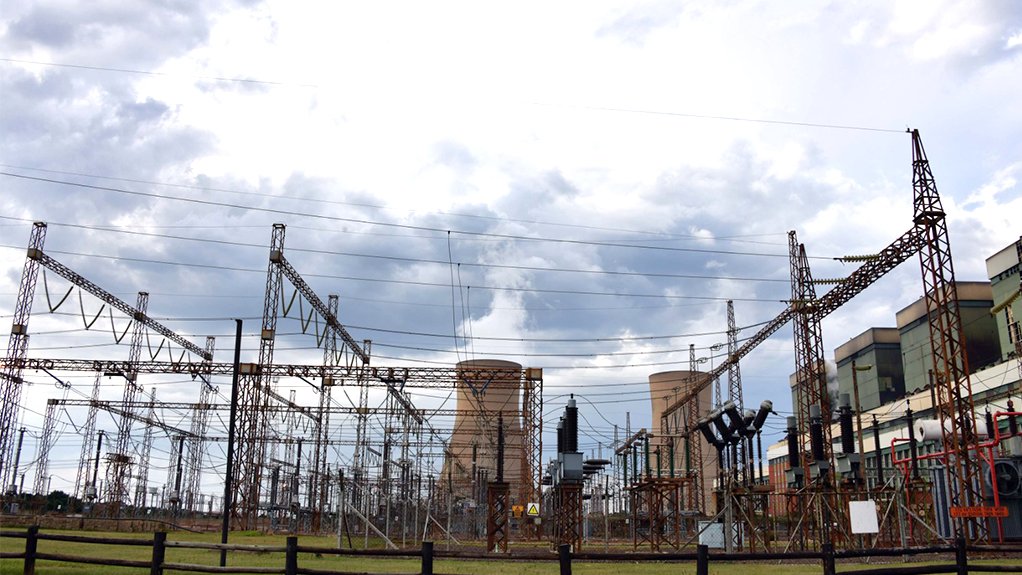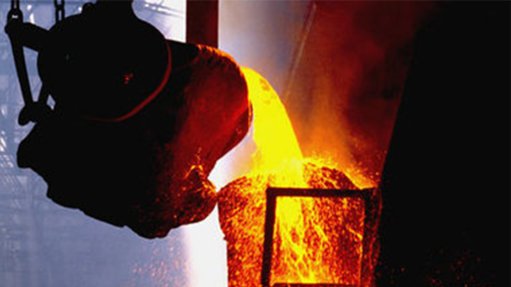Eskom committed to sustainable future


LONG-TERM CONSIDERATIONS Eskom is prioritising maintaining plant health over simply 'keeping the lights on at all costs'
State-owned electricity utility Eskom is focusing on reducing coal intensity and expanding renewable energy as part of its commitment to a sustainable future.
This shift in strategy prioritises maintaining plant health over simply “keeping the lights on at all costs” – a practice that has proven ineffective, according to Eskom primary energy GM Dan Mashigo.
Speaking at the 2024 Coal and Energy Transition Day, held at The Country Club, in Johannesburg, on July 23, Mashigo explained that Eskom’s ongoing projects and collaborations aim to enhance efficiency, reduce emissions and ensure energy security.
Eskom’s new consignment allocations from the Department of Mineral Resources and Energy include wind, solar and gas. The Integrated Resource Plan (IRP) 2023 is under review and was published for comments in two phases.
Mashigo noted that the first phase of the IRP2023 relies on Eskom’s stabilising the electricity network to 75% efficiency, while the second phase involves new projects and the decommissioning of stations that have reached their end of life.
While nuclear energy was not included in the draft IRP2023, Mashigo said that Eskom will explore nuclear energy, particularly small modular reactors (SMRs), when considering repurposing existing infrastructure.
SMRs offer various benefits, including their being modular and deployable. Unlike traditional reactors that require proximity to large water bodies for cooling, SMRs can be placed inland, offering greater flexibility, he explained.
Many of Eskom’s coal-fired power stations are part of the network grid and water supply system, making them suitable locations for SMRs with limited cooling requirements and closed-circuit cooling systems.
However, despite their potential, SMRs will still need to comply with stringent safety requirements, Mashigo added.
While emphasising the importance of energy security, he stated that a reserve margin of 20% to 30% is ideal for managing variability and volatility in supply and demand.
Mashigo also stressed the importance of dispatchable energy, particularly as renewable-energy penetration increases, to ensure grid stability. This includes addressing the lack of inertia, which is required in a grid when integrating renewable sources, to maintain the quality of supply.
Expansion Considerations
Eskom faces the challenge of expanding its transmission network, which entails adding 14 000 km of transmission lines and increasing the system’s capacity by 50 000 MVA over the next ten years, Mashigo said.
This increase in capacity is essential for efficiently handling and distributing power, ensuring the reliability and stability of the electricity supply as Eskom integrates more renewable- energy sources and upgrades its infrastructure.
He also emphasised the importance of energy market readiness, noting the need for recapitalisation and digitalisation of the distribution networks of Eskom and municipalities.
Eskom’s move towards greater digitalisation aims to enhance real-time analytics and plant management.
Mashigo reiterated the importance of maintaining plants, stating that all power stations have a finite life span.
Many of Eskom’s power stations, commissioned in the 1960s and based on 1950s technology, are now outdated and inefficient, operating at only 20% to 30% efficiency.
New power stations, however, operate at 44% efficiency, resulting in lower carbon emissions per ton of coal. Eskom plans to phase out most current stations by 2050, except for Medupi, which will operate slightly beyond 2050, along with Kusile and Majuba. As coal demand decreases, other energy sources will be introduced.
Despite this transition, Mashigo assured coal miners that Eskom “remains open for business”.
Eskom collaborates with various international utilities, focusing on efficiency improvements that benefit customers and reduce emissions, including carbon and sulphur oxide emissions.
It is retrofitting plants with flue-gas desulphurisation technology, specifically at Medupi and Kusile. There are also abatement efforts, such as retrofitting plants with low nitrogen oxide burners, and adopting low-cost flue gas desulphurisation methods such those used in Zimbabwe and Botswana.
Future Vision
Highlighting Eskom’s future and its belief in a sustainable path forward, Mashigo emphasised the utility’s envisioning a multimarket model with private and independent participants working alongside it.
The utility aims to reduce coal intensity and expand renewable energy, predicting it will operate from 48 GW to 60 GW, while recognising the need for increased capacity to support Africa’s growth. The higher penetration of renewables will require substantial backup, potentially at a 1:2 ratio.
In highlighting the importance of the just energy transition, Mashigo concluded that the planning to repurpose the power stations set to be decommissioned in the next five to six years is crucial, as the power stations are already integrated into the grid and water networks and, hence, can be more easily transitioned to cleaner energy sources.
Article Enquiry
Email Article
Save Article
Feedback
To advertise email advertising@creamermedia.co.za or click here
Press Office
Announcements
What's On
Subscribe to improve your user experience...
Option 1 (equivalent of R125 a month):
Receive a weekly copy of Creamer Media's Engineering News & Mining Weekly magazine
(print copy for those in South Africa and e-magazine for those outside of South Africa)
Receive daily email newsletters
Access to full search results
Access archive of magazine back copies
Access to Projects in Progress
Access to ONE Research Report of your choice in PDF format
Option 2 (equivalent of R375 a month):
All benefits from Option 1
PLUS
Access to Creamer Media's Research Channel Africa for ALL Research Reports, in PDF format, on various industrial and mining sectors
including Electricity; Water; Energy Transition; Hydrogen; Roads, Rail and Ports; Coal; Gold; Platinum; Battery Metals; etc.
Already a subscriber?
Forgotten your password?
Receive weekly copy of Creamer Media's Engineering News & Mining Weekly magazine (print copy for those in South Africa and e-magazine for those outside of South Africa)
➕
Recieve daily email newsletters
➕
Access to full search results
➕
Access archive of magazine back copies
➕
Access to Projects in Progress
➕
Access to ONE Research Report of your choice in PDF format
RESEARCH CHANNEL AFRICA
R4500 (equivalent of R375 a month)
SUBSCRIBEAll benefits from Option 1
➕
Access to Creamer Media's Research Channel Africa for ALL Research Reports on various industrial and mining sectors, in PDF format, including on:
Electricity
➕
Water
➕
Energy Transition
➕
Hydrogen
➕
Roads, Rail and Ports
➕
Coal
➕
Gold
➕
Platinum
➕
Battery Metals
➕
etc.
Receive all benefits from Option 1 or Option 2 delivered to numerous people at your company
➕
Multiple User names and Passwords for simultaneous log-ins
➕
Intranet integration access to all in your organisation



















